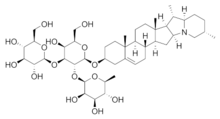Week 12: Your plant and the Leaf Economic Spectrum. Note: this assignment will be due Tuesday, April 22.
Look back at the research presentation (April 3) and find the slides about the leaf economic spectrum (LES; slides 9 and 10). Look at the information you have gathered on your plant. Where do you think it falls on the LES? What do you base this on? I am attaching a manuscript (Wright et al 2004) that explains the LES in a bit more detail. While you likely will not know the specific traits of your leaves (such as leaf %N or dark respiration rate), you should have a pretty good idea based on the ecology of the plant whether this is a plant that invest heavily in resource acquisition (live fast, die young) or resource retention (slow and steady) at the leaf level.
We focus on six key features of leaves that together capture many essentials of leaf economics. (1) Leafmass per area (LMA) measures the leaf dry-mass investment per unit of light-intercepting leaf area deployed. Species with high LMA have a thicker leaf blade or denser tissue, or both. (2) Photosynthetic assimilation rates measured under high light, ample soil moisture and ambient CO2 are here called photosynthetic capacity (Amass) for brevity. Photosynthetic capacity is influenced both by stomatal conductance and by the drawdown of CO2 concentration inside the leaf (carboxylation capacity). (3) Leaf nitrogen (N) is integral to the proteins of photosynthetic machinery, especially Rubisco8,13. The photosyn- theticmachineryisresponsiblefordrawdownofCO2 insidetheleaf, a process also affected by leaf structure14,15. (4) Leaf phosphorus (P) is found in nucleic acids, lipid membranes and bioenergetic mol- ecules such as ATP. Phosphorus derives from weathering of soil minerals at a site, in contrast to nitrogen, much of which may be fixed from the atmosphere by plants. (5) Dark respiration rate (Rmass) reflects metabolic expenditure of photosynthate in the leaf, especially protein turnover and phloem-loading of photo- synthates16. (6) Leaf lifespan (LL) describes the average duration of the revenue stream from each leaf constructed. Long LL requires
((Wright et al 2004)
Focusing on these different types, it is percieved that this plant is leaning towards the conservitive sides. There are lots of secondary compounds put into the plant. But the leaves only last two years, making it not as concervitive as say the pine.
I have writen a lot about these secondary compounds in earlier posts.
I do not know about the dray mass of the leaves, nitrogen efficiency, photosynthetic rates, or dark respritation rates.








